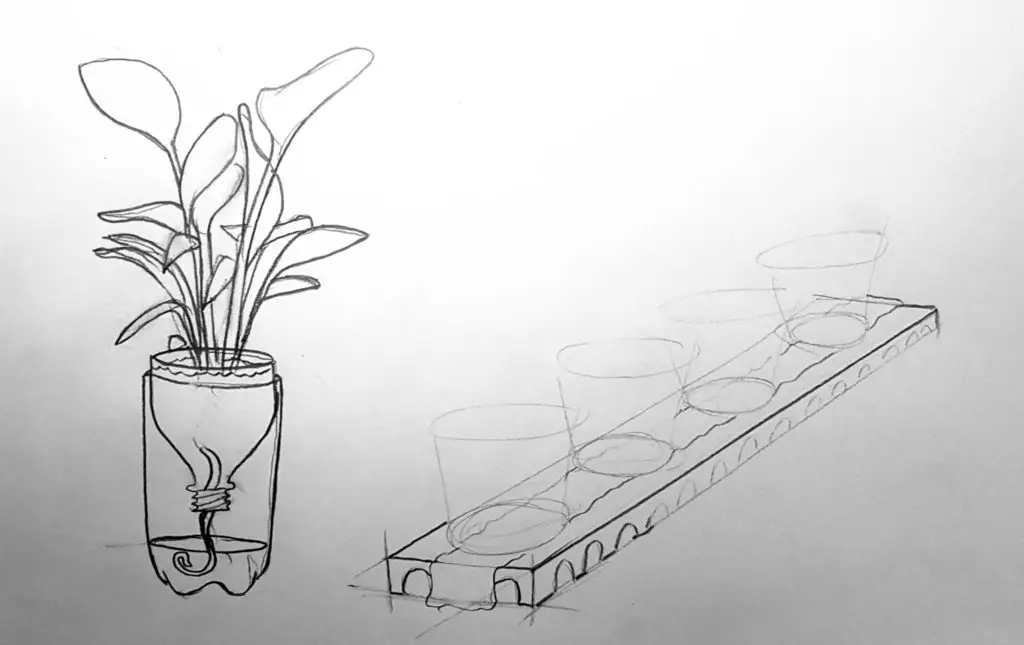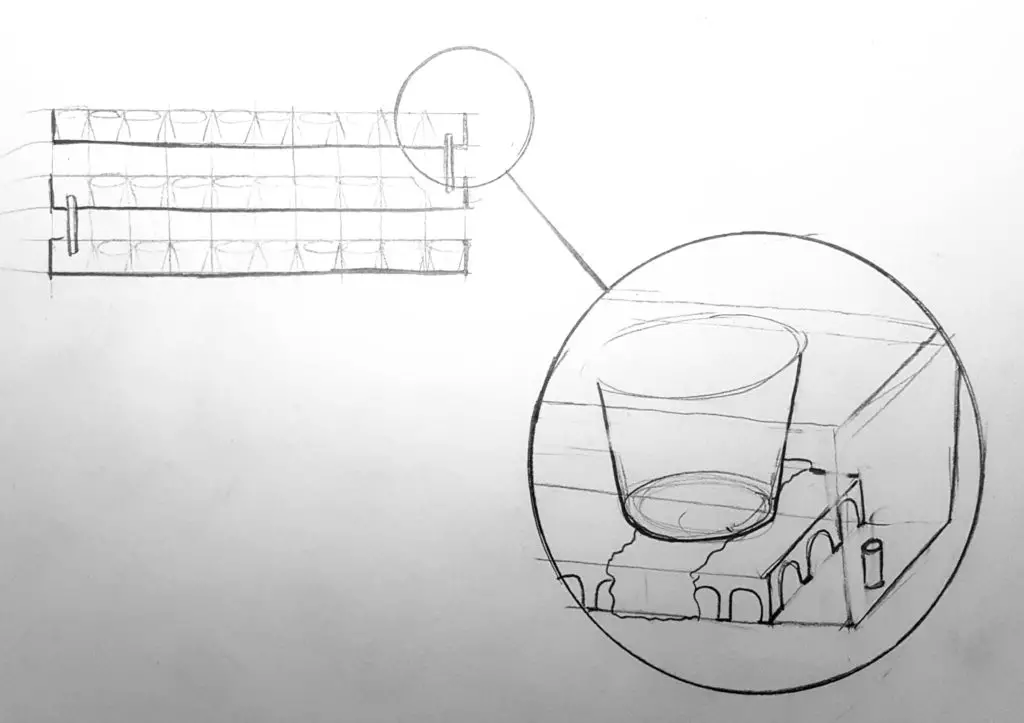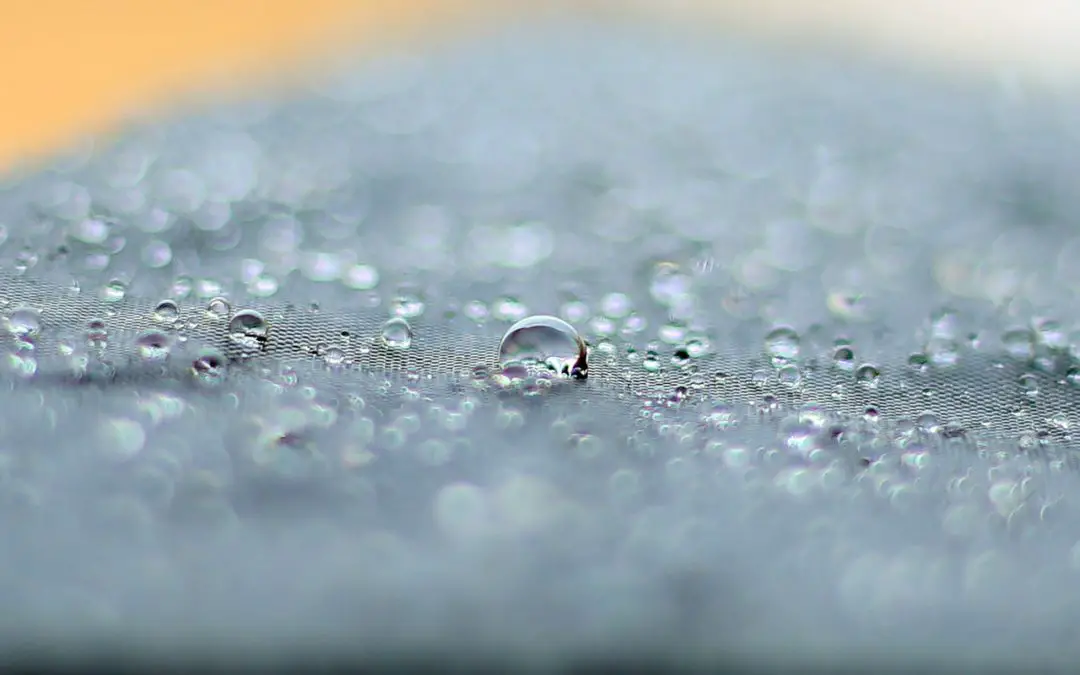A sub irrigated living wall or planter relies on capillary action to draw the water up into the roots. It’s easier, less transmission of disease between plants, and it’s more water efficient. Here are the highlights:
In a sub-irrigated living wall, plants are watered from below the roots instead of above. The roots and growing medium are connected to the water reservoir by a capillary wick, which could be a piece of felt or fabric. If combined with a well-draining soil, this creates ideal conditions for epiphytic (growing on another plant, often a tree), semi-epiphytic and soil loving plants that are often found in living walls. It is much lower maintenance than hydroponic, and requires less watering than a conventional soil system.
Why is sub-irrigation good for living walls?
Sub-irrigation is an interesting technology that mimics the soil’s natural water flows. Capillary forces move water from dry soil to wet soil in nature. Sub-irrigation leverages these forces to get the right amount of water to the roots of the plant.
Sub-irrigation lets your planters or living wall have a water reservoir, without waterlogging the soil. This means you don’t have to water as often. Plants can access as much or as little water as they want.
This also means that the roots aren’t at risk of drying out between watering, as long as the reservoir doesn’t go dry.
Sub-irrigation combines elements of hydroponics and regular soil culture. It’s sometimes called passive hydroponics.
What are the benefits of sub-irrigation vs gravity irrigation?
- Efficient water use: savings of 50% or more are often quoted
- Fertilizer savings: without water and fertilizer draining to waste.
- More uniform growth: plants are able to access water and fertilizer as needed
- Lower humidity: dry leaves and stems means less evaporation
- Higher growth: If roots aren’t competing for moist soil (because through capillary action the soil is much moister), it’s easier to grow.
- Reduced disease: the plant won’t suffer from root rot, and dryer leaves and stems can reduce growth of unwanted organisms and disease
- Reduced spread of disease: because the water is flowing towards the plant by capillary action, there’s less spread of disease because of low water movement between plants
What’s the simplest sub-irrigated system?
Picture the typical potted plant on the top left of the following photo.
When you water, any excess percolates down through the soil and drains into the bottom tray. Any water level in the tray corresponds to the water level in the soil. The soil becomes water-logged, and roots can decompose due to insufficient air to water ratio, regardless of how well-draining the soil is.
How do we improve the situation?

By sub-irrigating (bottom right pot on above photo). By separating the soil from the water, we’re able to improve the situation. This can be accomplished by raising the pot up out of the water.
Much better. But, we’re now any extra water is un-useable by the plants. It just sits in the bottom tray.
By adding a wicking element, we give that water a pathway it can access through capillary action. The plant can draw water from the fabric or wick, and capillary action will replace it. This is a sub-irrigated pot!
What’s the simplest sub irrigated living wall?
Here’s another variation on a sub-irrigated planter (top left of below image).

Imagine a row of these pots lined up, but instead of each one having it’s own water tray, they share a tray. It’s a trough. With this setup you can form a row of sub-irrigated pots. And it doesn’t have to be a pot, it’s possible to use a more breathable material like a fabric to contain the growing medium.
You can connect multiple of these rows. You can put in a drain to limit the height of the water in the trough. This lets the water cascade down from the top to the bottom, trapping just the right amount in each level.
Now you have a sub-irrigated wall! It looks something like this:

What are the problems with sub-irrigated green walls?
- It can add cost: construction is more complex
- Salt can build up if the system isn’t flushed occasionally. All tap or rain water has some natural dissolved salts and minerals. They build up over time if they’re not flushed away
- The roots need to be long enough to reach the moist lower soil.
Conclusion
Sub-irrigation is a great technology for creating a pest resistant pot, planter, or living wall. You leverage capillary action to keep the top of your soil dryer, while allowing moisture to reach the roots.
The key is to elevate the growing medium above the water level, but connect it in a way that capillary action can draw water to the roots.
Sources

I’m Alex Lafreniere. I learned a lot about plants when I built and operated a landscaping company. But, there’s always more to learn. Ever since travelling across the world, I’ve wanted to find ways to bring more tropical and exotic plants into my life. This is the site where I share everything I’ve learned with you.
This site is owned and operated by Plant Hardware, a sole proprietor headquartered in Calgary, Canada. Plant Hardware is a participant in the Amazon Services LLC Associates Program, an affiliate advertising program designed to provide a means for sites to earn advertising fees by advertising and linking to Amazon.com.Plant Hardware may also participate in affiliate programs with Bluehost, Clickbank, CJ, ShareASale, and other sites. Plant Hardware is compensated for referring traffic and business to these companies.

